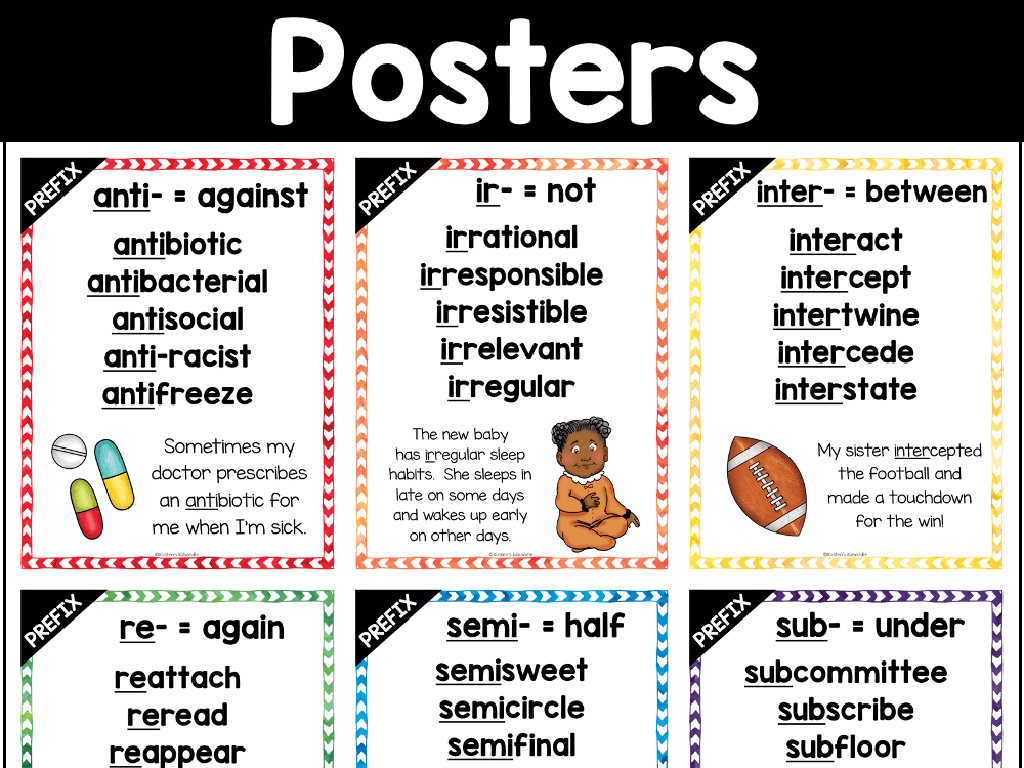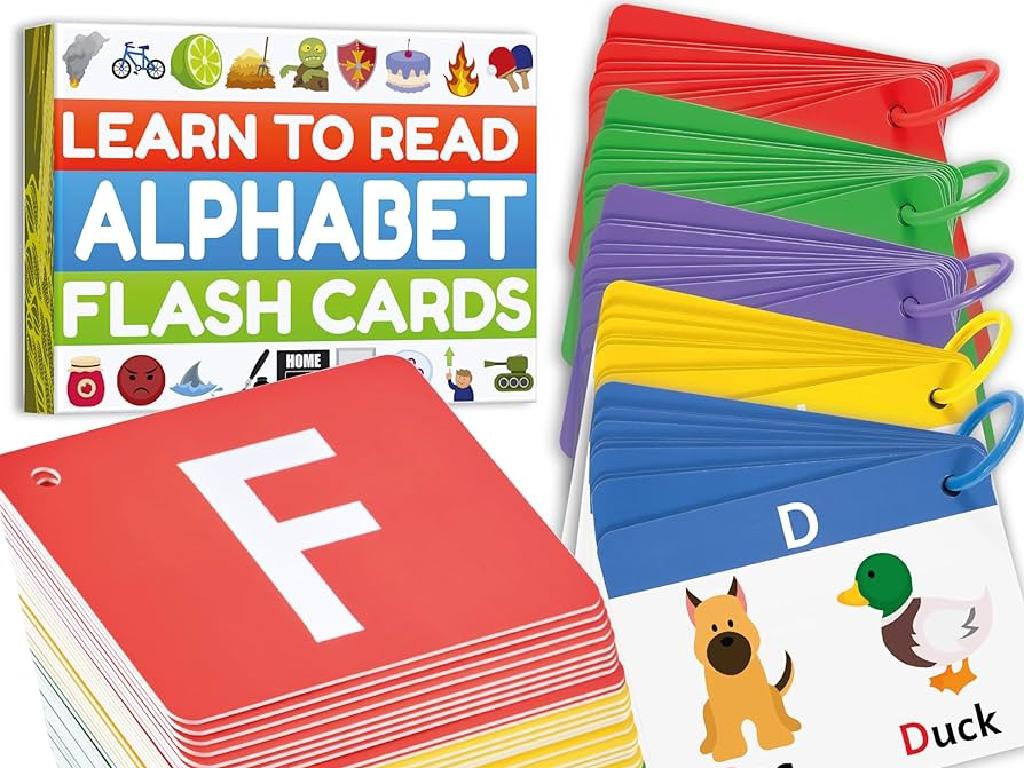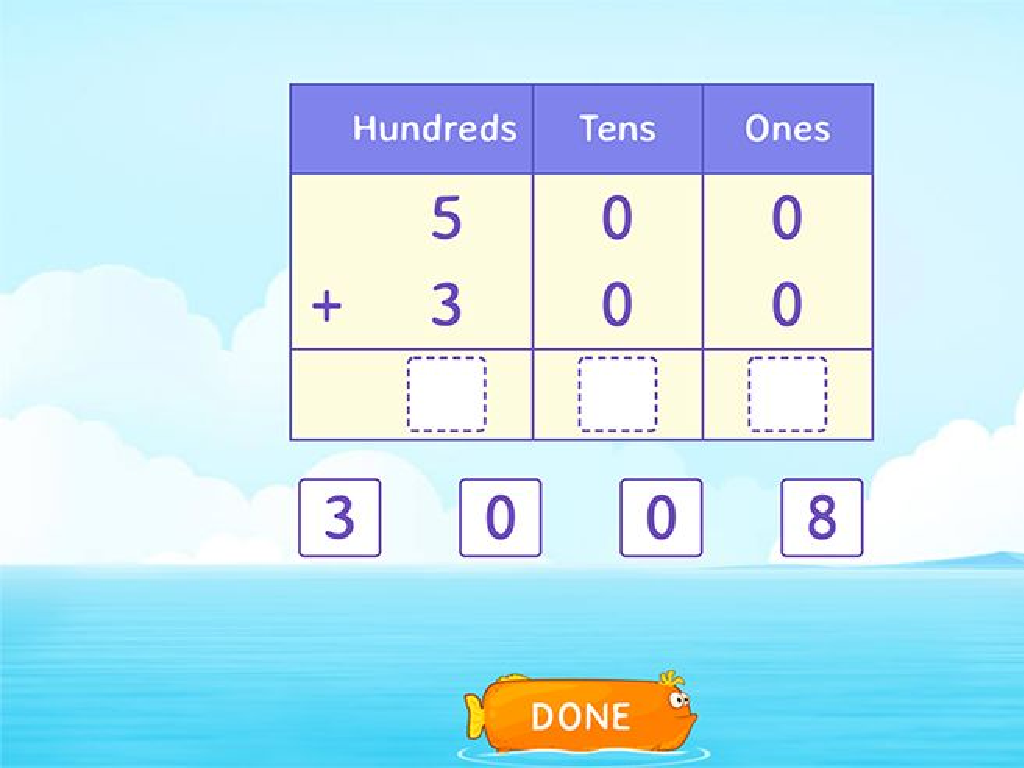Balance Addition Equations: Up To Three Digits
Subject: Math
Grade: Third grade
Topic: Addition: Three Digits
Please LOG IN to download the presentation. Access is available to registered users only.
View More Content
Balancing Three-Digit Addition Equations
– Explore adding three-digit numbers
– Add numbers in the hundreds, tens, and ones places
– Learn why balanced equations matter
– Balanced equations show equal values on both sides
– Practice with real examples
– Example: 123 + 345 = 468; both sides equal 468
– Discover tips for accurate addition
|
Today’s lesson introduces students to the concept of balancing equations with three-digit numbers. Emphasize the importance of understanding place value when adding numbers in the hundreds, tens, and ones places. Explain that balanced equations are essential in math because they demonstrate that both sides of the equation represent the same total. Use real-world examples to show how this skill is used in everyday situations, such as matching the total amount spent to the total amount of a bill. Provide students with strategies for checking their work, such as reverse checking by subtraction. Encourage students to practice with various examples and to ask questions if they’re unsure about how to balance an equation.
Understanding Equations
– Equations as balance scales
– Both sides must be equal
– Example: 123 + ___ = 145
– Find the number that makes both sides match
– Solving for the missing number
– What number plus 123 equals 145?
|
This slide introduces the concept of equations to third-grade students by comparing them to a balance scale, which they may be familiar with. Emphasize that just like a scale needs to be balanced, both sides of an equation must be equal. Use the example provided to show how to find the missing number that balances the equation. Encourage students to think of the equation as a puzzle where they need to find the missing piece. In the next class, practice with more examples and provide hands-on activities where students can physically balance objects to understand the concept better.
Adding Three-Digit Numbers
– Review place values
– Understand Hundreds, Tens, Ones
– Line up numbers by value
– Each number must be in the correct column
– Start adding from the right
– Add Ones, then Tens, then Hundreds
– Carry over if needed
– Sometimes numbers add up to more than 9
|
Begin the lesson by reviewing the concept of place values, as it’s crucial for understanding how to add three-digit numbers. Emphasize the importance of lining up numbers by their place values to avoid confusion. Demonstrate adding each column starting from the right, which is the Ones place, and moving left towards the Tens and Hundreds. Explain the concept of carrying over when the sum of a column is greater than 9, and how that extra value is added to the next column on the left. Use examples on the board and encourage students to practice with different numbers to solidify their understanding.
Balancing Addition Equations
– Understanding equation balance
– Balance means both sides are equal in value
– Equality in equations
– If one side sums to 123, so must the other side
– Adding equally to both sides
– Like a seesaw, add the same numbers to keep it level
– Practice with real examples
|
This slide introduces the concept of balancing equations to third-grade students. Begin by explaining that an equation is like a balance scale, both sides must be equal or have the same value. Use simple examples to show that if we have a number on one side, we need to have the same total on the other side to keep it balanced. Demonstrate with actual addition problems how adding the same amount to both sides maintains this balance. For instance, if we start with 100 + 23 = 123, we can add 2 to both sides to keep it balanced: 100 + 23 + 2 = 123 + 2. Encourage students to think of the equation as a puzzle where they need to find the missing piece to make both sides match. Provide practice problems for students to apply this concept and prepare to assist them as they work through these exercises.
Finding the Missing Number in Addition
– Use subtraction to solve
– Example: 123 + ___ = 145
– Find what number adds to 123 to make 145
– Subtract to find the blank
– Take the total 145, subtract 123, and find the missing addend
– 145 – 123 equals what?
– The answer is the missing number in the equation
|
This slide is aimed at teaching third graders how to find a missing number in an addition equation by using subtraction. Start by explaining that subtraction is the inverse operation of addition, which means it ‘undoes’ addition. Show the example on the slide and work through it step by step. Subtract 123 from 145 to find the missing number. The answer, which is 22, is the number that, when added to 123, equals 145. Encourage students to practice with similar problems and ensure they understand the concept of inverse operations as a strategy to find missing numbers in addition equations.
Let’s Practice Together: Balancing Equations
– Solve together: 234 + ___ = 300
– Discuss steps to find the answer
– Start with the total, subtract the first number
– Check our work for balance
– Add 234 and our number, does it equal 300?
– Understand equation balance
– An equation is balanced when both sides are equal
|
This slide is designed for a class activity to practice balancing addition equations. Start by writing the equation 234 + ___ = 300 on the board. Ask the class to solve it together by thinking about what number needs to be added to 234 to make 300. Guide them through the steps of finding the answer by starting with the total (300) and subtracting the first number (234). Once they find the missing number, have them add it to 234 to check if the equation balances, reinforcing the concept that both sides of the equation must be equal. This exercise will help students understand how to approach and solve balanced equations, a key skill in math. Possible activities for different students could include solving similar equations with varying totals and addends, using manipulatives to visualize the process, or creating their own equations for peers to solve.
Your Turn to Solve: Balancing Equations
– Receive your worksheet
– Find the missing numbers
– Use addition skills to solve for unknowns
– Ensure equations are balanced
– Add both sides to see if they equal
– Work individually and focus
|
This slide introduces an activity where students will apply their knowledge of addition to balance equations. Hand out worksheets with various balance equations up to three digits. Students should work independently to find the missing numbers that make both sides of the equation equal. Remind them to use addition to check their answers. Possible activities: 1) Have students trade worksheets to check each other’s work. 2) Create a game where students earn points for each correctly balanced equation. 3) Allow students to come to the board to solve an equation. 4) Set up stations with different levels of difficulty for equations. 5) Incorporate a timer for a fun challenge to see how many equations they can balance in a set time.
Class Activity: Balance the Scale
– Use balance scale in groups
– Each weight equals a number
– Create balanced equations
– For example, if one side has 123 and the other has 100 + ?, find the missing number.
– Share equations with class
|
This interactive group activity is designed to help students understand the concept of balanced equations in a tangible way. By using a balance scale and weights, students can visually see how equations must be equal on both sides to be balanced. Each group will use the weights to represent different numbers and work together to create equations where both sides are equal. Afterward, they will present their equations to the class, explaining how they achieved balance. This will reinforce their understanding of addition and the properties of equality. Possible variations for different groups could include using different starting numbers, incorporating subtraction to balance, or challenging students to find multiple ways to balance the same equation.
Conclusion: The Importance of Balancing Equations
– Congratulations on mastering balance!
– Balancing is key in math
– Ensures both sides of equation are equal
– Math: A puzzle with fitting pieces
– Each number and operation fits perfectly to solve math problems
– Keep practicing equation balance!
– Practice makes perfect, try more problems!
|
Well done to all the students for learning how to balance addition equations with up to three digits! Understanding the concept of balancing equations is crucial as it forms the foundation for algebra and higher-level math. It teaches us that equations are like puzzles where every number and operation has a specific place and role. Remember, math is all about patterns and connections, and just like puzzle pieces, every element in math has a place where it fits perfectly. Encourage the students to continue practicing with different equations to become more confident in their skills. Celebrate their success and motivate them for future math challenges.





